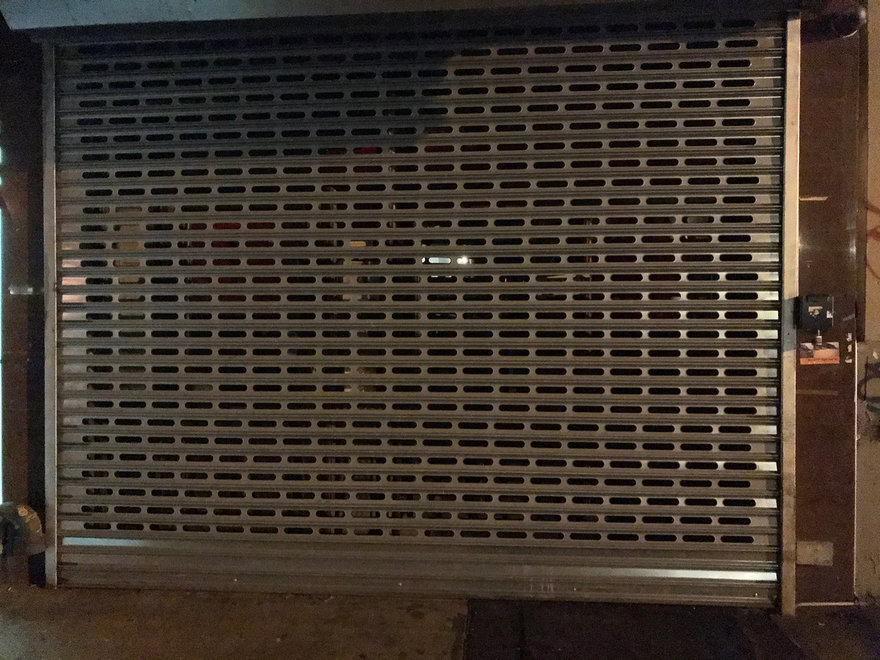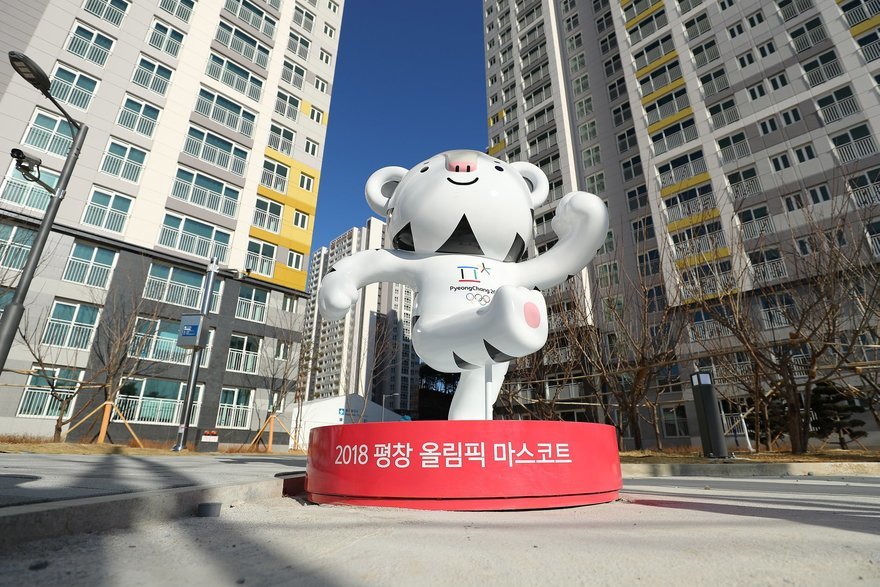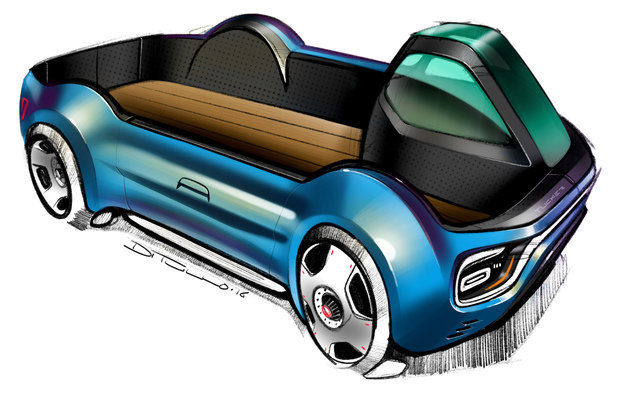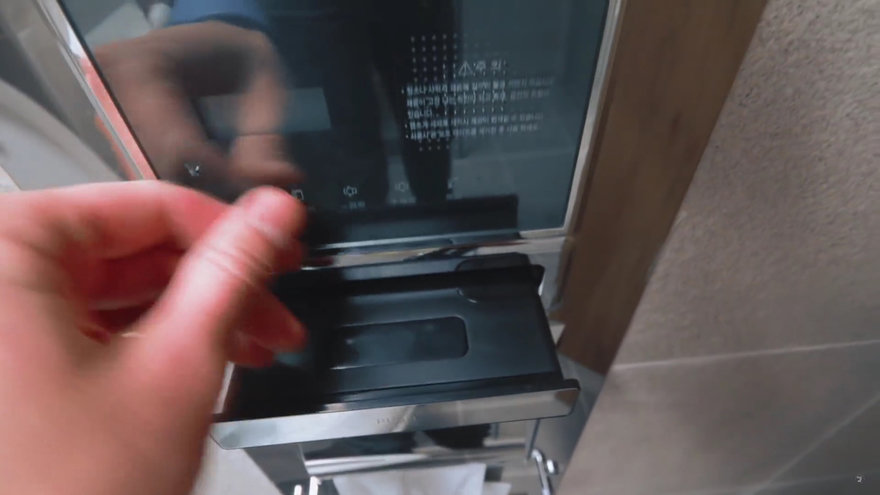#IMakeaLiving is a series of free, traveling events powered by FreshBooks that focuses on bringing together an eclectic group of small business owners for a lively, candid, and often hilarious, conversation. In light of the series' second year, we're interviewing business-owning designers on how they brought their companies to the next level.
For the past 14 years, Jon Wye's eponymous company has been designing and manufacturing belts, dog collars and other leather goods in Washington DC. Often featuring original artwork from freelance artists around the country, his eye-catching products attract an international audience of people who live life on the quirkier side. Wye's rise to success wasn't easy, though. The self-taught businessman spent years developing sales and marketing skills to match his design ones, all while living at home with his parents to save money.
![]() Jon Wye
Jon WyeWye took a break from manufacturing to chat with us about the process of starting and operating a small, creative business. In this interview, we discuss Wye's "aha" moments while starting his company, how to go about building your own machinery and tips, tricks and reminders for designers looking to start their own business ventures.
Core77: We can all read the more polished version of your business story here, but what don't we know about how you started your company, Jon Wye?
Jon Wye: Well, when I was first starting the company, I had no idea what I was doing. I just liked making things. I lived at home until I was 31 just so I could get the company going, and every dollar I made went into it. There weren't many investors, but for me what I did get, which I know a lot of people don't have, is parents that were willing to let me live with them rent free. I was working on stuff, so they were happy that I was pushing forward with something. I owe them so much just for that.
I remember this very clear moment when my dad came into my bedroom, which is funny when you're 28 years old, and he said, "Boy, you know you really love making this stuff, but you hate selling it." Of course I responded with something like, "You don't know what you're talking about, dad. I've got to refine the product, and I've got to do this and that"—just spewing excuses. He walked out of the room saying, "Yeah, yeah. Sure, sure." And I just remember my heart sinking, and realizing, "God, he's right."
It took years to develop myself as a salesman and figure out where to sell my products and what to do. But within days I signed up for a local flea market. It was literally just a table at Eastern Market in DC with someone hustling behind it selling things. That was really the start, but there were a lot of other anecdotes along the way of just learning to communicate with people and selling myself and the brand.
![]() Straight Stripe Belt
Straight Stripe Belt![]() Zombies in Space Belt
Zombies in Space Belt![]() Koi Belt
Koi BeltDo you have any advice for people in similar situations now—starting their own businesses from a strictly design/maker standpoint?
That same lesson I learned is what I rail on other people for. I do these informational interviews with young people and I'll ask them what they're working on so far. The moment someone starts telling me they're designing their website and they have someone doing their business cards, I think, "Cool, great. You are really excited for the idea of doing a business."
But it's a trap because from the outside world that seems legitimate. Of course you've got to have business cards. Of course you've got to design a logo and do all these things. But that's the stuff everyone does, and those are the knowns. I still barely have a standardized business card. I heat stamp a piece of leather and cut it out on scraps, and people love it. They'll say, "You're giving me a one inch piece of leather? Real leather?" And in my head I think, "Yeah, whatever. It's scrap."
"Consumers can't see half of the imperfections that you can see—they're primarily satisfied with the fact that you're striving to make it better each time."
A lot of people get wrapped up in business for the sake of business, and they forget that they just need to get out into the world and fail, go sell stuff and stop trying to think of what they're making as a perfect product. Consumers can't see half of the imperfections that you can see—they're primarily satisfied with the fact that you're striving to make it better each time.
I have customers that bought my belts 10 years ago, and when I look at them, I can't believe I ever made a belt like that. But they tell me that my belts have gotten so much better—they're stronger, and they've lasted longer. I look at it like the product is just your ambassador. You only get one other chance, which is if the customer is lucky enough to communicate with you, to then solve that issue. The product has to be amazing, especially if you don't have a huge marketing budget. So I've always just made sure that the product is doing the silent work for me.
I'm wondering if your mindset versus the young designers' mindset is a generational difference. In other words, do you think the internet and crowdfunding platforms have given us an excuse to put less focus on the product and more focus on overall branding and aesthetics?
If I have to see one more video of some artisanal dude wearing the right kind of roll up jeans with the right kind of Red Wing boots, with the right kind of music in the background...
It's exactly what you said, generational. In fact, I'm still learning from young people, now that they've fully gone through the internet, about how I need to present better in the online space. But you put that kid next to me at a sales event, and I'll crush them any day.
![]() Math Cat Leather Guitar Strap
Math Cat Leather Guitar StrapYoung people have forgotten that the primary focus is their product or whatever it is they need to sell. And yeah, sometimes I look up other leather people online, and I see their videos and think, "You're charging what for what?" I'm at heart, a manufacturer. I'm a small manufacturer, but I like to consider myself a manufacturer because my goal is to grow a business and to make it sustainable.
I think with these two mindsets, there's a way to bridge the two—the world of that guy toiling away with the right haircut and the right music in the background and then the guy toiling away so that he can keep manufacturing in the United States and make a product as good as handmade but in mass. And with a system, and with eyes on growing economy and providing jobs.
On another note, you work with a lot of freelance artists who design the artwork featured on many of your products. Do you have any advice for successfully managing freelancers?
I'm sure this goes back to managing people 101, but of course I never read those books. It's kind of the basic stuff—just be so darn clear about what you can actually offer and what you expect. I think one of my big lessons came early. My first website was a friend from college helping me make it for free. It was such a grueling experience to drag it out of him because he was doing it for 20 minutes a day when he had time while he was trying to build his own career. You can't really lay that on your friends and people—you can only get so many favors.
I couldn't get anyone to work with me in the beginning because I just was no one. And I'm still small potatoes, let's be honest. But what I've found in the art community is every single artist has a story of someone not paying them or someone telling them, "I could have drawn that." No you couldn't have. So you develop a reputation where, "Oh, it's Jon—he can't pay the highest amount, but he always pays you."
"There's always going to be disagreements, and I've found that people just need to be heard sometimes when they have a grievance."
![]() Waffle Belt Buckle
Waffle Belt BuckleThen some artists want royalties. I don't have a big enough system to deal with royalty payment and tracking inventory, especially when it's all made to order. So I tried that here and there, and finally I just said, "Here is who I am. This is what I can do. This is the maximum I can pay. I own the rights to the artwork," for example. Some say I can't do that, and then you find many more that can. There's always going to be disagreements, and I've found that people just need to be heard sometimes when they have a grievance. I've experienced colleagues that might just shut the door and say, "No. No. You were wrong here." Sometimes just letting them speak and trying to find a resolution is very helpful.
Circling back to the topic of putting product first and foremost, I've heard that you actually make and/or tweak a lot of your own machinery...
Yeah, in the beginning a lot of it was custom made because there was nothing out there for the base stuff that I needed. Then some of it from back in the day was refurbished. And then a lot of stuff past that has been a lot of custom tooling—taking things that exist and tweaking them by going to machine shops and telling them what different parts need to do. It's maybe 25% custom and 75% stock machinery with customizations.
Without a ton of previous knowledge on building machinery, how did you make that happen?
My mom's a general contractor, so I grew up around materials. At 13 I was looking at the difference between this aluminum grade and that aluminum grade and what types of welding techniques are needed for this and that. It's a lifetime of absorbing information and then knowing where to go to talk to people and having just enough information to be the glue in that scenario.
I have a lot of friends that are engineers, programmers—people that when I have a question can tell me who to go talk to. So if anything I've been more the glue, and what I've discovered is that overall sense of how projects are supposed to play out. I've often found that if my spidey senses are tingling, I should listen to them because sometimes even the professional machine shop guy will tell me we have to do things a certain way that doesn't make any sense.
If you don't know something about materials or grades or steel, you can look it up in the McMaster-Carr catalog, read their descriptions and prices, and then call the metal stockyard. This is getting really hokey here, but everybody wants to feel valued. If I'm calling with a grade school level of inquisitiveness and asking some dude whose job is nothing but to sell steel and aluminum plating and ask what the difference between this and this is—people get excited about that. Maybe their job is kind of boring if all they're doing is selling aluminum plate all day, but then they have someone call in and ask them what they know. Then from there, you cross reference that with information online. You find an answer.
![]() A look inside Jon Wye's workshop, located in Washington DC
A look inside Jon Wye's workshop, located in Washington DCI'm thinking of a particular heat press that I built. Heat presses are extremely expensive, and I built a one by six foot heat press with full digital control and all that. It still works and is 10 years old. I just dusted the moth balls off, put some new nematic shocks on it for opening and closing it, and now it's going to be the heart of my new synthetic dog collar line. I'm already developing the next generation of it. I've started sketching that out because I need to make the dog collars even more efficient.
But at that time I did not know how to build a heat press. It was just asking questions and noticing details along the lines of, "What does this heat press look like? They put a rubber on the bottom that for some reason, doesn't melt. There's an adhesive that adheres it to the steel plate." So you have enough observational knowledge to put into Google: Rubber that withstands 400 degrees. I remember when I talked to the metal guy I asked, "How thick does my aluminum need to be over a span of one foot by six feet to not warp under its own weight?" He responded by doing the math for me on the spot, and in my head I thought, "Holy crap." Then I asked, "What do I need if I'm going to be joining the two surfaces together? What do I need on the steel plates?" Then he told me that I needed a Blanchard grind on the steel. I didn't know what a Blanchard grind was, but I needed this Blanchard grind so that the two pieces would fit really snugly together.
If you can build it, I can build it—once I figure out how. I think for me it's a desire to convince myself that I can do anything.
*******
Interested in listening to more start-up stories? #IMakeaLiving Powered by FreshBooks will be hosting their next event on February 21st in LA (Learn more and register here), and you can also listen to the #IMakeaLiving podcast here.
![]()






 Photo by Noah Hoffman
Photo by Noah Hoffman Photo by Noah Hoffman
Photo by Noah Hoffman Photo by Noah Hoffman
Photo by Noah Hoffman Photo by Noah Hoffman
Photo by Noah Hoffman

 Image by Matt Whitcomb
Image by Matt Whitcomb 













































































































